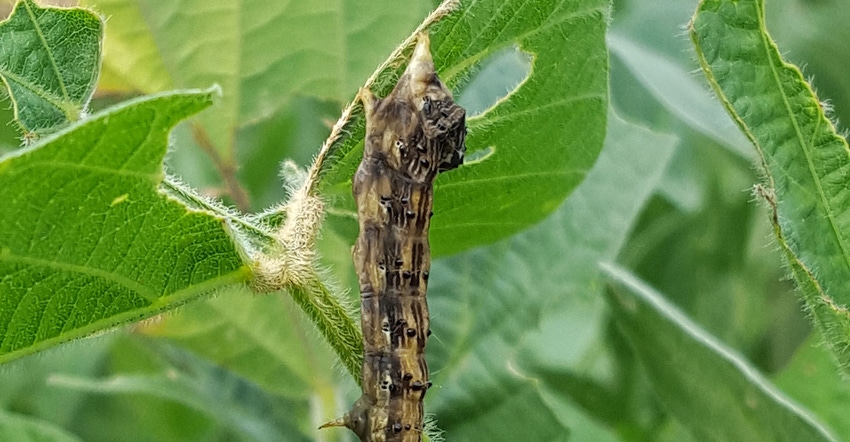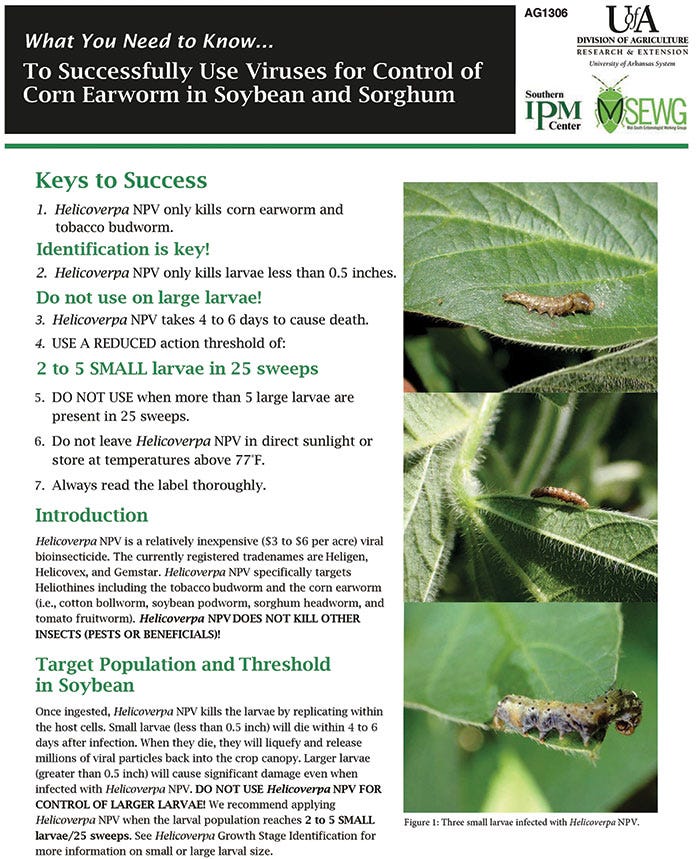April 17, 2018

A host-specific virus is being used to control bollworms and budworms in Arkansas crops.
Helicoverpa nucleopolyhedrovirus, or just NPV, does not affect humans, plants or other insects, including those that are beneficial.
A fact sheet about Helicoverpa NPV is now available online at http://bit.ly/HelicoverpaNPV. The fact sheet is a joint publication of the University of Arkansas System Division of Agriculture, Southern Integrated Pest Management Working Group and the Mid-South Entomologists Working Group.
The bioinsecticide has been studied and in use for years. Gus Lorenz, Extension entomologist for the University of Arkansas System Division of Agriculture, said there is no shortage of research behind the use of this virus.

The product is widely used and is currently in use in many different countries.
“It’s well-adopted in Australia and they’re selling it in South America,” Lorenz said. “It’s used all across the country and they’re pushing it pretty hard in the Mid-South.”
The virus only kills bollworm and budworm larvae that are less than a half-inch long and has no effect on later growth stages also known as instars. Because of this, Lorenz said, the virus should not be used if a producer finds more than five larger larvae in 25 scouting sweeps of a field.
Catch them early
“The virus doesn’t control the pests at later stages,” he said. “The younger larvae are smaller and more susceptible. 90 percent of what bollworms consume is in the last instars, so you have to catch them before they cause that damage. It’s slow killing, so the last thing you want to do is put it on a late stage larva.”
The virus usually causes death in small larvae within four to six days and can show residual activity through several generations of pests if the conditions are right, according to the publication.
Lorenz said while there is always a possibility for resistance with any insecticide, it is not likely here in the Mid-South.
“If you expose larva to it in the front end of the season and the back end of the season, year in and year out, it could build resistance,” he said, “but it’s not probably anything we’re going to experience.”
As stated in the publication, the virus is safe for tank-mixing. However, along with some other mentioned precautions, Lorenz warns against mixing with high pH water.
“Water with high pH breaks down the matrix of the virus,” he said. “It’s extremely important that it’s not mixed with water with a pH of eight or higher.”
There are restrictions on when to use Helicoverpa NPV in relation to time of year.
You May Also Like




